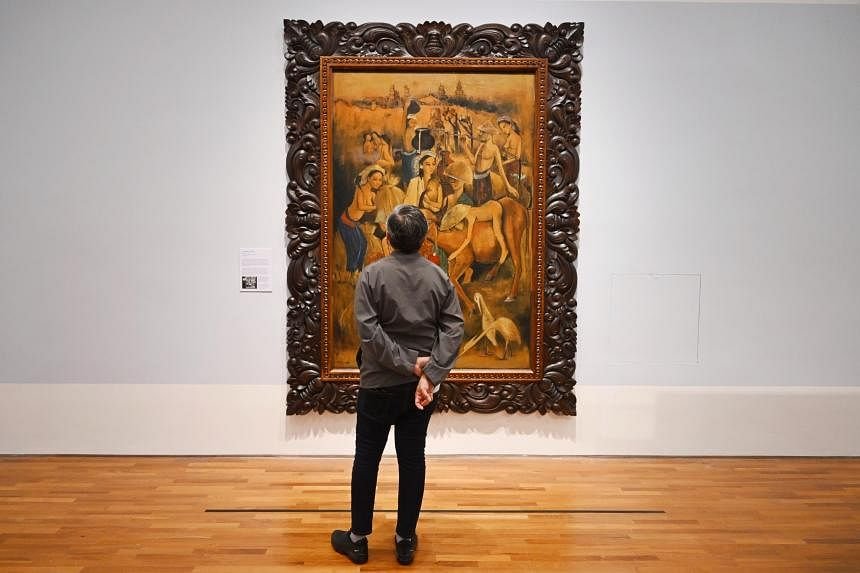SINGAPORE – Art lovers might be horrified by the idea of drilling a hole in an artwork.
But conservator Diana Tay did that to extract a tiny sample from Singapore pioneer artist Cheong Soo Pieng’s A Corner Of Art Studio (1947).
The founder of Barc (Beneath Art Research and Conservation) Labs is quick to clarify that the sample is the size of a full stop, carefully excised using a medical scalpel. The resulting cross-section revealed that Cheong had applied white ground on wood to prepare it for painting before layering on red-orange paint.
Handling an artwork is an intimidating experience, and Dr Tay says: “It’s always very scary. And usually when you are doing it, people are watching you. Every artwork is like a patient, everything has to be catered for differently.”
Putting art under close scientific study can yield new insights, as a new exhibition at the National Gallery Singapore proves. Cheong Soo Pieng: Layer By Layer, which opens on April 5, takes visitors into the painter’s works with interactive displays that “peel” back layers of paint, canvas and wood.
The Amoy-born Cheong (1917-1983) came to Singapore in 1945 and taught at the Nanyang Academy of Fine Arts. Along with fellow China-born artists Chen Chong Swee, Chen Wen Hsi and Liu Kang, Cheong went on a landmark trip to Bali in 1952, which resulted in an exhibition that helped solidify the identity and reputation of the pioneer generation of Singapore painters.
Exhibition curator Teo Hui Min says putting the show together was an eye-opening experience for her. She adds: “As a curator, I tend to look closely at the archives, the artworks and, of course, we work closely with the conservators. But it was a unique experience to rediscover an artist I had thought about for a long time.”
Dr Tay, who worked on Cheong and Nanyang painter Georgette Chen’s works for her doctorate in art history, criticism and conservation at the University of Melbourne, literally puts art under a microscope to study the materials used in art-making.




